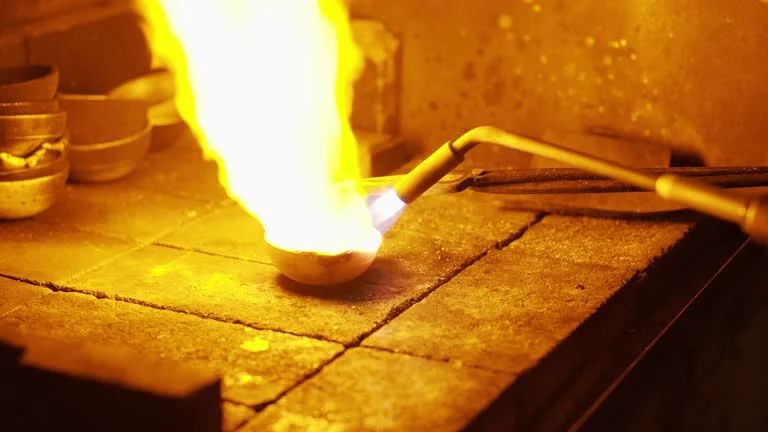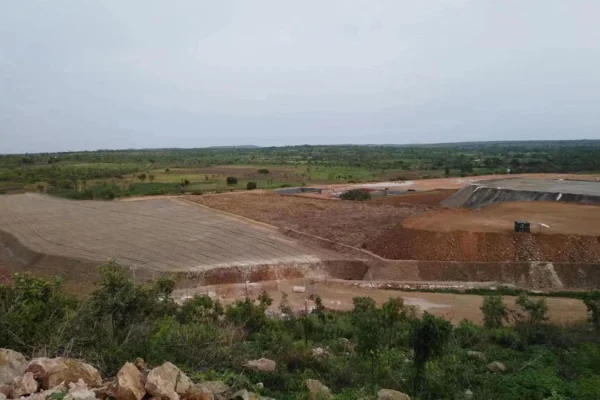
Introduction
Gold, a precious metal highly valued for its rarity, malleability, and resistance to corrosion, has been a symbol of wealth and a medium of exchange for centuries. The extraction of gold from its ores is a complex process that has evolved over time. Among various methods, the use of Sodium cyanide in Gold extraction, known as cyanidation, has been the dominant technique since the 1970s. This blog post will delve into the details of this technique, its working principles, environmental and safety considerations, and future prospects.
The Role of Cyanide in Gold Extraction
How Cyanide Reacts with Gold
Cyanide, a chemical compound containing carbon and nitrogen, forms a soluble complex with gold in the presence of oxygen. The reaction can be represented by the following chemical equation:
4Au + 8NaCN + O₂ + 2H₂O → 4Na[Au(CN)₂] + 4NaOH
In this reaction, gold is oxidized and forms a stable, soluble complex, sodium aurocyanide (Na[Au(CN)₂]). This allows the gold to be separated from the ore matrix and recovered through subsequent processes.
Conditions for Effective Cyanidation
For the cyanidation process to be efficient, several conditions must be met. The concentration of Sodium Cyanide in the leaching solution typically ranges from 100 ppm to 500 ppm (0.01% - 0.05%). A proper pH level, usually around 10 - 11. is maintained to prevent the formation of hydrogen cyanide gas, which is highly toxic. Additionally, the presence of oxygen is crucial, as it acts as an oxidizing agent in the reaction. However, in some cases, due to cost concerns, the introduction of additional oxygen to speed up the leaching process is not always carried out in mills.
The Cyanide Leaching Process
Preparation of the Ore
Before cyanide leaching, the gold - bearing ore needs to be prepared. This usually involves crushing and grinding the ore to increase its surface area. The finer the ore particles, the more exposed the gold is to the cyanide solution, enhancing the leaching efficiency. After crushing and grinding, the ore may be further processed through gravity separation or flotation to remove some of the gangue minerals and concentrate the gold - bearing fraction.
Heap Leaching
Heap leaching is a widely used method in large - scale gold mining operations. In this process, the prepared ore is stacked in large heaps on an impermeable liner. A dilute solution of sodium cyanide is then sprayed or dripped onto the ore heap. As the solution percolates through the heap, it reacts with the gold in the ore, forming soluble gold - cyanide complexes. These complexes are collected at the bottom of the heap in a pond or collection system.
Heap leaching is cost - effective, especially for low - grade ores. However, it requires careful management to prevent the leakage of cyanide - containing solutions into the environment.
Vat Leaching (Controlled Mills)
Vat leaching, also known as vat cyanidation or agitation leaching, is often carried out in a specialized mill on the mining premises. In this method, the finely crushed ore is placed in vats or tanks. A cyanide - containing solution is added, and the mixture is agitated to ensure good contact between the ore and the solution. The oxygen in the air or sometimes additional oxygen is introduced to facilitate the reaction.
Compared to Heap leaching, vat leaching allows for better control of the leaching conditions, such as temperature, pH, and agitation speed. However, it is generally more expensive due to the need for specialized equipment and higher energy consumption.
Recovery of Gold from Cyanide Solutions
Once the gold is dissolved in the cyanide solution, it needs to be recovered. There are two main methods for this:
Carbon - in - Leach (CIL) and Carbon - in - Pulp (CIP): In the CIL process, activated carbon is added directly to the cyanide - leached pulp. The gold - cyanide complexes are adsorbed onto the surface of the activated carbon due to its high surface area and strong adsorption properties. In the CIP process, the pulp is first separated from the solution, and then the solution is passed through a series of tanks filled with activated carbon. After adsorption, the carbon loaded with gold is removed from the system and further processed to recover the gold.
Zinc Precipitation: Zinc dust or zinc shavings can be added to the gold - cyanide solution. Zinc is more electropositive than gold, so it displaces gold from the gold - cyanide complex. The reaction is as follows:
2Na[Au(CN)₂] + Zn → 2Au + Na₂[Zn(CN)₄]
The precipitated gold can then be separated from the solution by filtration or sedimentation.
Environmental and Safety Considerations
Toxicity of Cyanide
Cyanide is an acutely toxic chemical. In high concentrations, it can be lethal to humans, animals, and aquatic life. In the context of gold mining, the main concern is the potential release of cyanide into the environment, especially into surface waters. Fish are particularly sensitive to cyanide, and even low levels of cyanide in water can have a detrimental effect on aquatic ecosystems.
Environmental Management
To minimize the environmental impact of cyanide use in gold mining, several measures are taken. Mines are required to comply with strict regulations regarding the discharge of cyanide - containing solutions. Tailings facilities, where the residual cyanide - containing solutions and waste materials are stored, are designed with impermeable liners to prevent leakage. Additionally, various treatment methods are used to reduce or remove cyanide from the solutions before discharge. These methods include chemical oxidation, biological treatment, and the use of ultraviolet light to break down cyanide.
Many mining operations also aim to recycle and reuse the residual cyanide in the processing circuits to reduce the overall consumption of cyanide.
Safety Measures for Workers
Mine personnel are at risk of exposure to toxic levels of cyanide. To protect workers, mines implement a range of safety measures. These include the use of automation to reduce direct human contact with cyanide - containing materials, providing workers with appropriate protective clothing, such as gloves, aprons, and respirators, and conducting regular safety training programs.
Future Prospects
Despite its widespread use, the cyanide - based gold extraction method faces challenges due to its environmental and safety concerns. As a result, there is a growing interest in developing alternative, more environmentally friendly gold extraction techniques. Some of these emerging techniques include the use of thiosulfate, bromide, or ionic liquids as alternative lixiviants. However, these methods are still in the experimental or early - stage commercialization phase and have their own limitations in terms of cost - effectiveness and efficiency.
In the meantime, the gold mining industry will continue to focus on improving the safety and environmental performance of the cyanide - leaching process. This includes further optimizing the use of cyanide, enhancing treatment methods for cyanide - containing waste, and strengthening regulatory compliance.
Conclusion
The use of sodium cyanide in gold extraction has been a cornerstone of the modern gold mining industry for decades. It offers a relatively efficient and cost - effective way to extract gold from a variety of ores. However, the toxicity of cyanide and its potential environmental impact cannot be overlooked. As the industry moves forward, a balance must be struck between the economic benefits of gold mining and the need to protect human health and the environment. Whether through improving existing cyanide - based processes or developing new, alternative technologies, the future of gold extraction lies in finding more sustainable and safer methods.
- Random Content
- Hot content
- Hot review content
- T-610 collector Salicyl oxime acid derivative Content 3.5%
- Industrial Acetic Acid 99.5% Colorless Liquid Glacial acetic acid
- Fertilizer magnesium sulfate/magnesium sulfate monohydrate
- Adipic acid 99% used as the material of nylon 66
- Food Additive E330 Citric acid monohydrate
- Zinc sulfate monohydrate 98% Industrial & Feed Grade
- Cobalt Sulfate 98% Brown yellow or red crystal
- 1Discounted Sodium Cyanide (CAS: 143-33-9) for Mining - High Quality & Competitive Pricing
- 2Sodium Cyanide 98% CAS 143-33-9 gold dressing agent Essential for Mining and Chemical Industries
- 3Sodium Cyanide 98%+ CAS 143-33-9
- 4Anhydrous Oxalic acid 99.6% Industrial Grade
- 5Soda Ash Dense / Light 99.2% Sodium Carbonate Washing Soda
- 6Oxalic acid for mining 99.6%
- 7Calcium hydroxide Industrial Grade 90%
- 1Sodium Cyanide 98% CAS 143-33-9 gold dressing agent Essential for Mining and Chemical Industries
- 2High Quality 99% Purity of Cyanuric chloride ISO 9001:2005 REACH Verified Producer
- 3 High-Quality Sodium Cyanide for Leaching
- 4Powdery emulsion explosive
- 5Industry Grade Electron grade 98% Sulfuric Acid H2SO4 Sulphuric Acid Battery Acid Industrial Sulfuric Acid
- 6Colloidal emulsion explosive
- 7sodium hydrosulfide 70% flakes used Mining Industry











Online message consultation
Add comment: